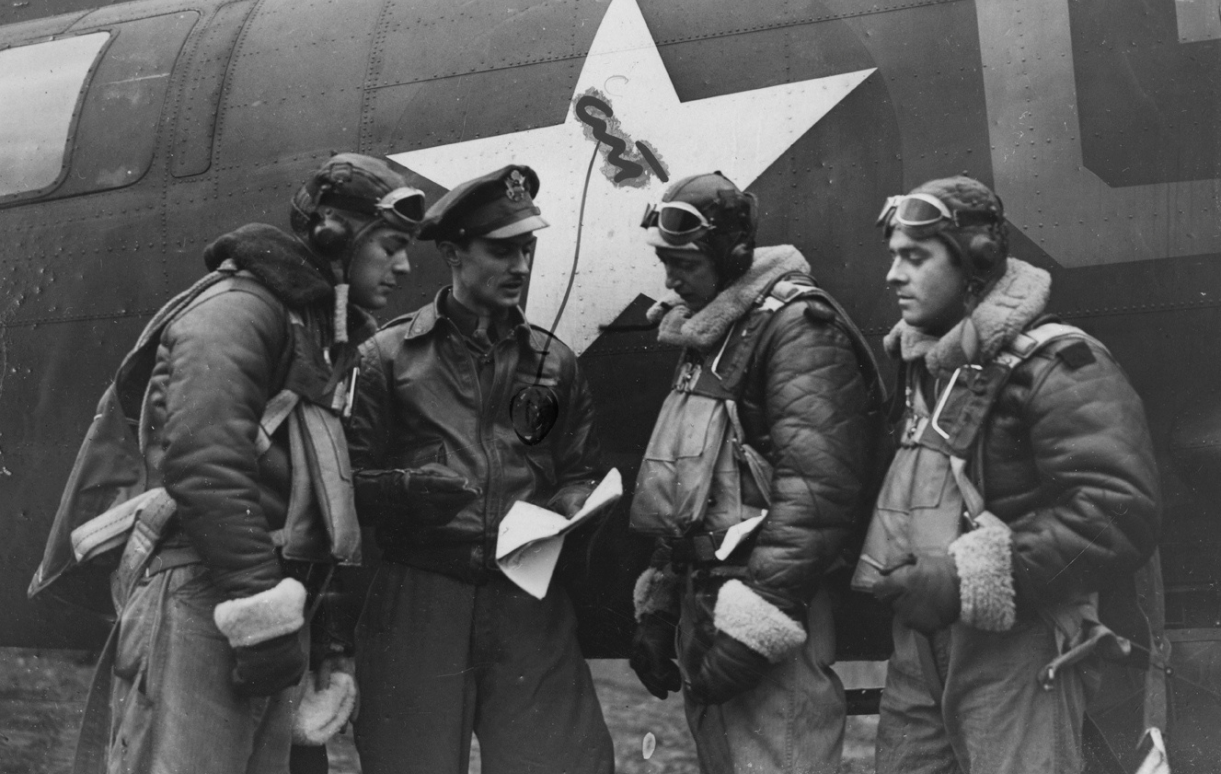
Step back in time to the tumultuous era of World War II, where brave B-17 navigators soared through the skies, their eyes fixed on the horizon, guiding their crew safely through the treacherous clouds. Among these courageous individuals was Jon Schueler, a navigator turned artist whose experiences in the war would shape his artistic vision for years to come. Before you experience our special exhibition, Lost Man Blues: Jon Schueler – Art and War, take a look inside the crew of a B-17 and Schueler’s role as a navigator.
A Look Inside a B-17
Being a bomber crew member during World War II was an incredibly perilous and demanding role. The B-17 crew members faced constant danger while carrying out their missions. To acknowledge their bravery and dedication, a system was put in place where individuals who completed a certain number of combat missions were allowed to rotate back to the United States for a period of time.
A fully crewed B-17 had 10 airmen:
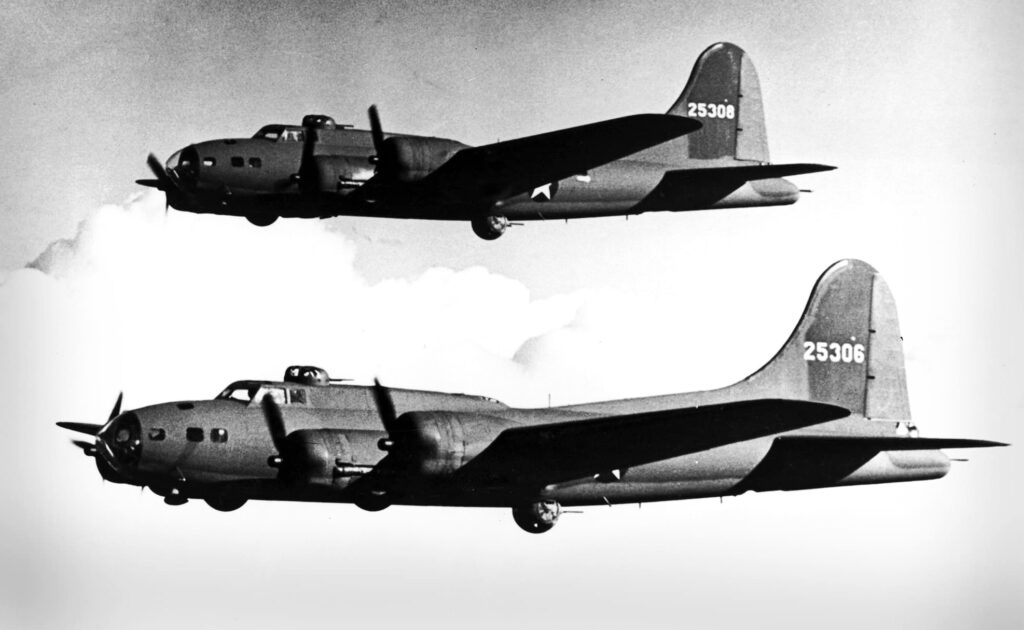
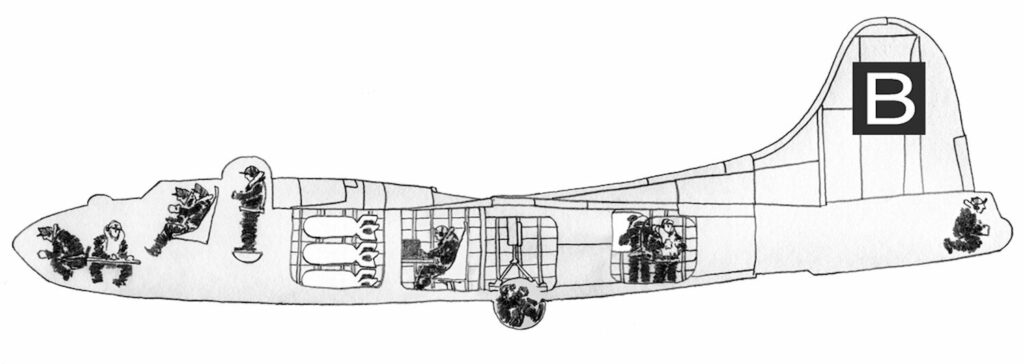
These brave crew members faced countless challenges and risks each time they took off on a mission. The 8th Air Force’s airmen made up the bulk of those injured or killed in the Army Air Forces, with a 41% casualty rate at the end of the war.
Schueler’s Path to the Sky
Born in Milwaukee, Wisconsin, Jon Schueler initially aspired to be a writer. However, fate had a different path in mind for him. In 1941, he bravely joined the U.S. Army Air Corps as a B-17 navigator and served his country with great honor.
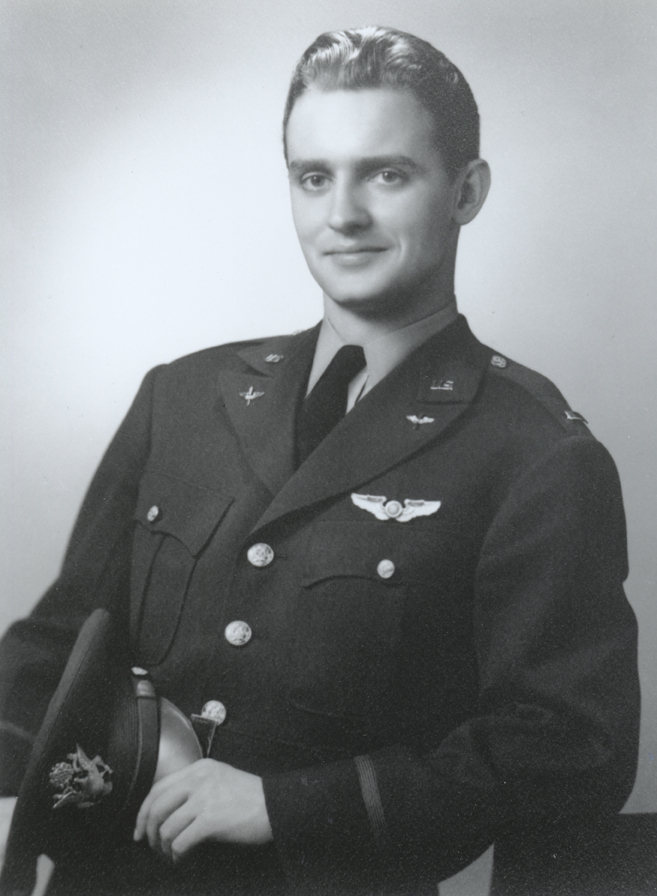
First Lieutenant Schueler’s navigator training lasted 15 weeks at the beginning of the war and extended to 20 weeks by the war’s end. He would go on to complete eight missions between late 1942 and early 1943.
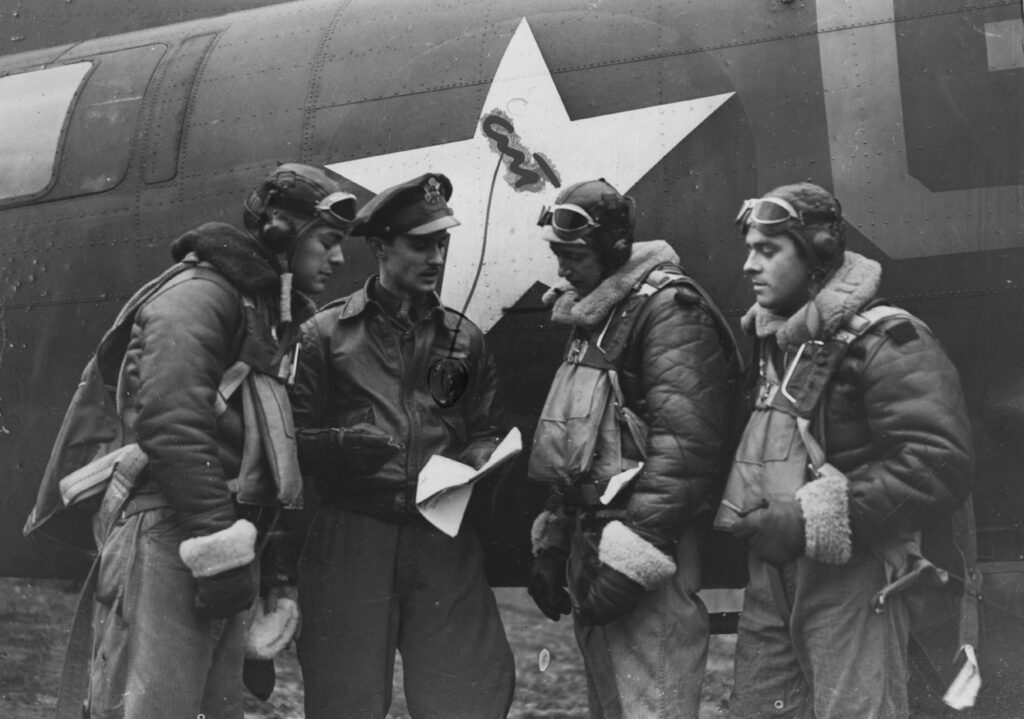
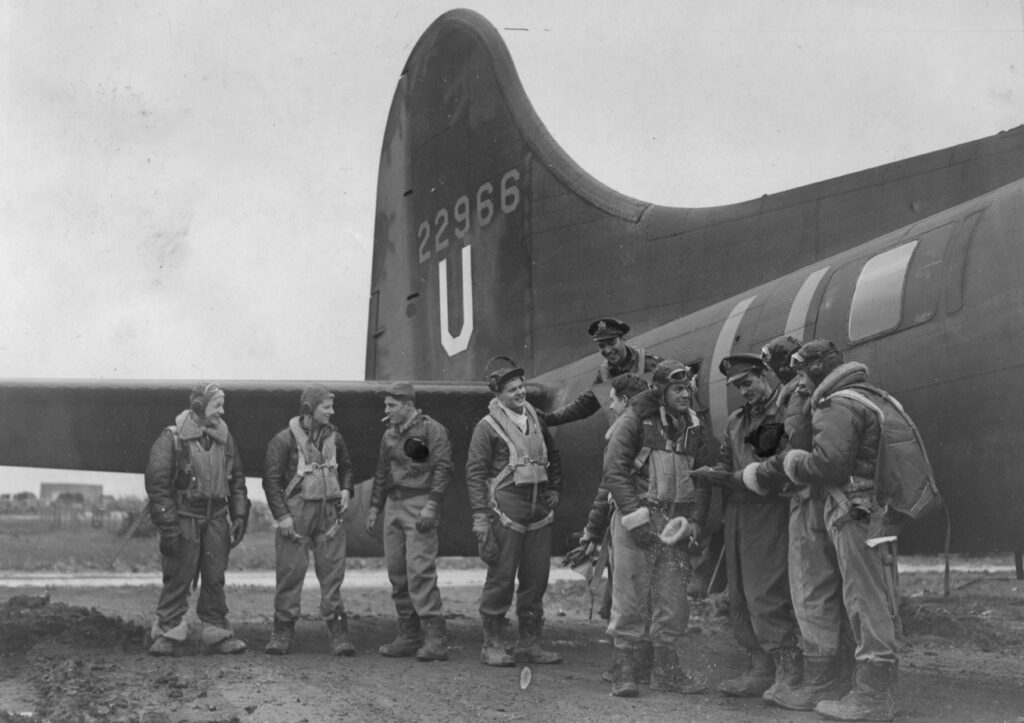
It was Schueler’s responsibility to know where the aircraft was at all points during their flights. In both World War II and present day, Navigators use:

“I told them that the story began during the war when I was a navigator in B-17’s. I told them that the navigator flew in the nose of the B-17, a Plexiglass nose, as though suspended in the sky. There, in combat and before, the sky held all things, life and death and fear and joy and love…”
-Jon Schueler, The Sound of Sleat: A Painter’s Life
Today, we can admire Jon Schueler’s artwork as a tangible reminder that even in times of turmoil, there is still room for inspiration and beauty. Let us honor these remarkable individuals who flew among the clouds both in war-torn skies and in the realms of art, forever leaving their mark on history.



